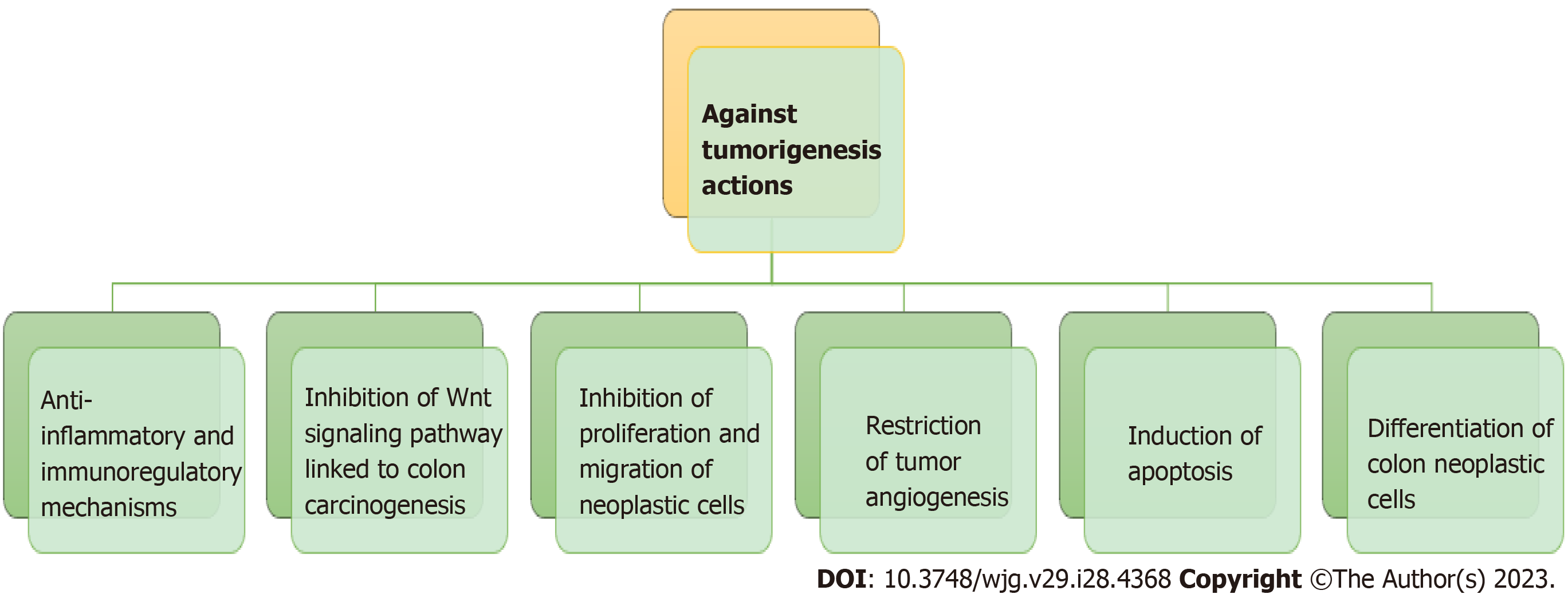Copyright
©The Author(s) 2023.
World J Gastroenterol. Jul 28, 2023; 29(28): 4368-4383
Published online Jul 28, 2023. doi: 10.3748/wjg.v29.i28.4368
Published online Jul 28, 2023. doi: 10.3748/wjg.v29.i28.4368
Figure 1 The cross-talking axis host/gut microbiota: The gastrointestinal microbiota plays an important role in host physiology, metabolism, and nutrition.
An organism with a regular maintenance of the physiological homeostasis leads to eubiosis of the gut microbiota and vice versa. Conversely, an altered physiological homeostasis leads to gut microbiota dysbiosis and vice versa. An alteration in the gut microbial community is linked to several disturbances gut conditions, including cancer, obesity, and a variety of gut disorders. The contribution of beneficial components of the gut microbiota to host physiology, metabolism, and immune function has become the focus of scientific research and will undoubtedly lead to new therapeutic approaches.
Figure 2 The metabolic activity by the colonic microbiota.
The intestinal microbiota finds an environment rich in polysaccharides which are not digested by stomach enzymes. Fermentation of polysaccharides by intestinal bacteria leads to the production of acetate, butyrate, and propionate, which are used as a carbon source by intestinal mucosal cells. The initial fermentation of the carbohydrate that escaped digestion in the small intestine is followed by the utilization and cross-distribution of metabolites by various members of the microbiota, and then the synthesis of short-chain fatty acids (butyrate, propionate, acetate). Proteolytic fermentation differs from saccharolytic fermentation because it releases many potentially toxic nitrogen and sulfur metabolites, such as ammonia, amines, nitrates, nitrites, and hydrogen sulfide[32,40].
Figure 3 The inhibitory properties of butyrate on tumorigenesis through various mechanisms by the colonic microbiota.
Many of the metabolites of protein fermentation can be taken up by other microorganisms and synthesized into active carcinogens. For example, amines and nitrates can be used by facultatively anaerobic and anaerobic colonic bacteria and catalysed the formation of N-nitrosamines, which are among the strongest procarcinogens. Reduced levels of butyrate in the body are not only an indication of the possibility of cancer, but also indicate the severity of the cancer and its course in the body.
- Citation: Colella M, Charitos IA, Ballini A, Cafiero C, Topi S, Palmirotta R, Santacroce L. Microbiota revolution: How gut microbes regulate our lives. World J Gastroenterol 2023; 29(28): 4368-4383
- URL: https://www.wjgnet.com/1007-9327/full/v29/i28/4368.htm
- DOI: https://dx.doi.org/10.3748/wjg.v29.i28.4368















